5 Ways to Begin Your Branding Before You Begin Your Branding
As with most elements of business, preparation is a key factor to finding success. Sometimes, the work done prior to the project is just as important as the work done during. This same idea is in play during the branding process. Jumping right into a new brand development or a rebrand is akin to jumping in a pool before finding out how deep it is. Those brands who begin their branding journey by following these five steps ensure they’re starting off on the right foot.
- Take a Look Around – Who are You Talking to?
Have you ever tried to talk to a group of people who aren’t listening? It’s an exercise in futility and a waste of time. This goes for brands that don’t identify their target audiences early in the branding process. They’re stuck shouting at the masses, hoping a few will actually hear the message. Before you can start determining your messaging, you first must decide who will be most apt to listen and associate with your brand and what your brand has to say.
- Don’t Leave it All Behind.
This is especially important for those planning to begin a rebrand. As mentioned previously on this blog, just because a brand is looking to refresh doesn’t mean that everything from its past must be wiped clean. Determine what brand characteristics and aspects still hold a piece of brand equity – whether it be your name, a logo element or simply a color scheme – and keep them in mind as the new brand takes shape. They are a built-in head start in the brand equity building process, and shouldn’t be wasted.
- Find Your Sweet Spot.
“Trying to be everything to everyone means you’ll be nothing to no one.” Much like identifying a target audience, proper pre-branding branding work includes researching what makes your brand stand out, and in which space you will best thrive. Brand specialties can vary greatly, but the ones who have the most success learn what differentiates them from the competition, and make that the focal point of branding efforts. Putting your best foot forward is a valuable resource in the path to success.
- Determine Your Destination.
At this point, there is a solid foundation of information in place and the branding process is about to really begin. However, there is one more question that still needs to be answered: where does the brand want to go? Branding without a final “destination” in mind is a sure path toward failure. The end result is what will help drive the strategies and actions surrounding the branding process, and allow them to all have a single endpoint to move toward.
- A Journey of a Million Miles Begins with a Single Step.
There’s a lot that goes into branding, and it can be a bit overwhelming. But after following these steps and going into the process armed with the information and strategic knowledge to ensure an efficient and effective brand build, the next step is the easiest – it’s time to start. Don’t get caught up in everything that stands between the beginning and the finish. Instead take each step with care and attention to the details that will arise.
Looking toward the Branding Future with an Eye on the Past
It’s a common misconception that a “rebrand” automatically means a brand new start – that when a rebrand occurs, the slate must be wiped clean and all subsequent branding elements must possess totally original characteristics.
In fact, the best rebrands take the opposite approach. They take the time beforehand to identify and research what brand aspects of the previous iteration carry the most weight and provide the most benefit, then find ways to incorporate or pay homage to these aspects in the new brand.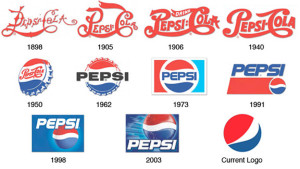
A recent example of this is the brand update from the Sacramento Kings of the NBA. As they were preparing to move to a new arena, they felt a need to update their brand, specifically their logo.
Throughout the redesign process, they looked at countless visual branding representations of the team name, many of which had little to no connection to the previous visual portfolio. However, what they kept coming back to was a design that touched on previous logos from the franchise’s long and storied past.
Ultimately, they chose a design that was a more modern version of the historical look, which immediately allowed fans, players, alumni, employees and the overall audience to connect the team’s future with its past, providing the new logo with instant brand equity.
This idea of building equity in a brand, especially within a specific element, is a difficult concept to strategize. Often it takes years to build up enough recognition, goodwill, historical weight, etc. to
sufficiently say that the brand carries its own weight with an audience. Therein likes one of the benefits of tapping into a brand’s history while strategizing its future. In this instance, those who connected with the team back when they were the Kansas City Kings or even when they were in Cincinnati, Ohio and known as the Cincinnati Royals could reconnect with the franchise through a familiar visual branding choice.
Or, as Alex Kramers of Kings.com says, “The powerful, all-encompassing symbol invoked a deep sense of nostalgia while reinvigorating a heritage that had long distinguished the historic franchise.”
This quote can resonate with brands across the spectrum as a reminder that rebranding and reinvigorating don’t have to be mutually exclusive. There’s a reason why the positive aspects of the past are so often imagined fondly, and why nostalgia is such a powerful emotional response, one that brands should be jumping at the opportunity to include.
Rebranding with an eye toward the past doesn’t have to stop at a redesigned logo. Every aspect of the brand is subject to holding nostalgic brand equity, and as such, should be included in the research process used to determine the best of the best of the old brand. It could be something as simple as a color choice that connects the branding eras, or it could go all the way up to the verbal branding and brand name that drives the association.
From start to finish, the big decisions to the smallest details, the top of the organization all the way down, a rebrand can be an overwhelming and challenging task. Why add more to the effort by starting from scratch? Use what your brand already possesses and give the new brand a ready-to-go foundation on which to build.
AW in Review - Addison Whitney Brand Salsa Recap 4.28.16
Welcome to one final April edition of the AW in Review, our roundup of our latest brand salsa and Addison Whitney news and posts!
Don’t forget, you can stay up-to-date with everything from Addison Whitney by joining the conversation with us on our social media channels – Twitter, Facebook, LinkedIn and Google+.
Don’t Reinvent The Branding Wheel
Innovative. Transcendent. Groundbreaking.
Many brands would love to be associated with these characteristics, or at least have the words used as descriptions of their brands. But for some, this may not necessarily be a good thing.
As discussed in a recent study from York University in Toronto, finding the right balance of when and how much to update the brand is crucial to brands, especially those who are seen as “sincere” and whose brand perception does not include a propensity for change. Read More...
The Science Of Logo Design: How Much Can A Logo Impact A Brand?
While certain luxury or niche brands may embrace the concept of exclusivity, where does that leave companies and organizations that pride themselves on being open, helpful and friendly?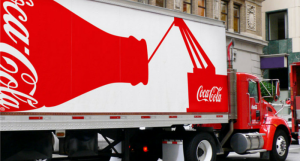
The idea of forgoing a logo isn’t realistic, particularly when standing out in a crowded marketplace is a basic requirement for success.
Is it possible to convey both competence and warmth in a logo? Unity and inclusion? Strength and kindness? Read More...
Why We Love Branding (And You Should, Too!)
At Addison Whitney, we’ve always identified with the term “brand fanatics” when it comes to our people.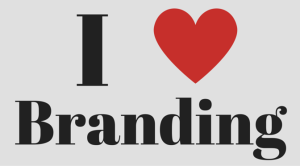
This makes sense – it’s what we do. We have a passion for creating and building strong brands, and when we’re not doing that, we love to analyze, brainstorm and gather new information about branding.
But why does branding hold a place among our favorites? We asked a few brand fanatics this very question: Why do you love branding? Read More...
Addison Whitney's quarterly newsletter, Forward, is bursting with branding news and insights - and we love to share what we know! Sign up here.
Don't Reinvent the Branding Wheel
Innovative. Transcendent. Groundbreaking.
Many brands would love to be associated with these characteristics, or at least have the words used as descriptions of their brands. But for some, this may not necessarily be a good thing.
As discussed in a recent study from York University in Toronto, finding the right balance of when and how much to update the brand is crucial to brands, especially those who are seen as “sincere” and whose brand perception does not include a propensity for change.
These brands have built their brand equity by tapping into the predisposition some consumers have for the familiar. These consumers want their brands and their products to feel (and look and taste and smell) the same throughout the years, and even the most minor changes can produce shock waves among the fan base.
In this case, branding efforts should make the focus more on reaffirming the standout brand qualities, taking a page from some of the world’s longest-lasting brands and highlighting what got them to this point in their journey.
However, some brands far underestimate the power of familiarity and sincerity, and find themselves caught up in the race to be the “next big thing.” Change is a process – it has to come natural and be the next smart strategic step for a brand, not something that is conjured up out of thin air, simply changing just to say they did it.
This doesn’t mean that brands that are well-established must stay stuck in the mud and not update. It’s that it needs to be a brand evolution instead of a brand reinvention. Subtle, progressive changes are necessary to stay up-to-date and capitalize on the current consumer mindset – the key is to know when it’s time for baby steps, and when it’s time for a leap of change.
On the other end of the spectrum, for those brands where innovation is second nature, the gloves are off. Consumers expect the latest and greatest at fairly regular intervals, and being synonymous with innovation comes with its own set of brand strategy best practices. For instance, in the aforementioned study, consumers saw Apple as “creative, young and exciting” and were more open to  accepting new products that brought about new product interactions.
accepting new products that brought about new product interactions.
But even Apple, who seems to be the leader in “next big thing” development, knows the power of maintaining core brand characteristics. From their iconic logo to the naming architecture of their products, the knowledge that a strong foundation is necessary to support the heavy load of brand updates.
All brands want to be known for something. They all want to have those defining characteristics that can represent who the brand is and what it communicates to their audience. But when it comes to innovation and brand change, the power is in not just being known, but being known for what is best for your brand.
Header Image Source
Image Source 1
Image Source 2
Why We Love Branding (And You Should, Too!)
At Addison Whitney, we've always identified with the term "brand fanatics" when it comes to our people. This makes sense - it's what we do. We have  a passion for creating and building strong brands, and when we're not doing that, we love to analyze, brainstorm and gather new information about branding. But why does branding hold a place among our favorites? We asked a few brand fanatics this very question: Why do you love branding? The answers may just inspire you to do the same!
a passion for creating and building strong brands, and when we're not doing that, we love to analyze, brainstorm and gather new information about branding. But why does branding hold a place among our favorites? We asked a few brand fanatics this very question: Why do you love branding? The answers may just inspire you to do the same!
"I love branding because knowing someone is connected to your brand is the greatest payoff for all the hard work that goes into creating those experiences. Is there anything more beautiful than seeing a consumer’s passion be ignited by a brand they love? Whether it’s their favorite restaurant, grocery store or lip balm, it’s all about capturing someone’s emotions through the creation of memorable and consistent experiences – in other words creating a strong brand – that makes me love branding so much." - Lizzy Guterma, Director of Marketing
"I love branding because it allows objects and experiences to create personal human connections and relationships." - RJ Clouse, Senior Brand Strategy Manager
"I love branding because it is the foundation upon which a company or product is built. An interesting name, a timeless logo, and even consistency in messaging/advertisingmakes brands recognizable in their most basic form. By sticking to their brand strategies, these companies have created equity with their customers that can only come from that strong foundation." - Ashley Chaffin, Verbal Branding Associate
"I love branding because it is an opportunity to discover great perspectives and ideas and then be a part of shaping the way they get presented to others." - Chris Cureton, Manager, Visual Branding
"I love branding because it’s powerful. A strong brand can instantly connect people with an image or a feeling, and that image or feeling can change how they feel about whatever that brand touches. For instance, my notebooks from Rifle Paper Co. make me feel creative and my Kate Spade planner makes me feel refined yet brimming with personality. I think branding is the most powerful when a brand can elevate the functional aspects of a product." - Ashley Wiederhold, Senior Project Manager
The Importance of Branding on a Community
The State University of New York at Buffalo, the largest public university in the state, has gone through a number of branding iterations in the past few years. In an effort to focus their branding efforts to highlight what makes the university standout, the brand focus has alternated between highlighting the school’s Buffalo home and putting at the forefront its place among the universities in the state and the name recognition that accompanies “New York.”
After a number of years splashing “New York” across everything from athletic fields and uniforms to marketing materials and websites, a change in brand strategy has reversed course back to focusing on Buffalo as the school’s main point of emphasis.
Outside of the conversation that could be had about brand consistency and the importance of identifying a solid direction across all areas of the institution, one point that this back-and-forth has emphasized is how branding, especially place-name-focused branding, impacts the community in which the brand resides.
In this situation, one of the driving forces behind the change back to commonly using “University at Buffalo” and putting the city name up front was to better connect the university with the community, and to allow Buffalo residents to have the university as a point of civic pride, instead of feeling as if they shared its success with the entire state.
Institutions in which the branding includes a place name often include this perspective in their branding efforts. Communities are built on commonality, and place-focused brands provide that on a large scale. The most prominent examples of these are sports franchises, where the name is front and center and which serve as a uniting force for their home bases.
Consideration should exist across the brand portfolio, starting with the name. Although it can seem a minor part of the process, choosing which specific city, state, town or region to use in the brand name can have far-reaching impacts.
The Carolina Panthers football team, whose home stadium and business operations all reside in Charlotte, North Carolina, decided early on in their branding process their goal to become a regional mainstay, a “team for both Carolinas” (completely with a logo that is shaped similarly to the outline of both states together) and not limit themselves to one city or state.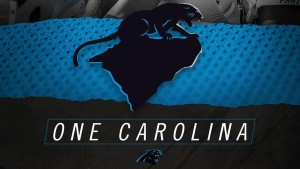
This expansion of the brand identification to an entire region has been paramount in the brand strategy, especially as the team made its way to the most recent Super Bowl and promoted a "One Carolina" marketing campaign, looking to further enhance its uniting powers within the region.
On the other side, trying to cast too wide a brand net can alienate your local audience and be seen as putting their community on the back burner in the eyes of the brand. This is yet another example where research, information-gathering and a sense of awareness to the state of mind around you is the most important aspect of brand development. Knowing the importance of local buy-in and the best way to ensure a connection with the brand can save time and money down the road, and also give your brand a head start in its drive to success.
Image Source 1
Image Source 2
Image Source 3
The Masters: A Brand Unlike Any Other
The calendar has turned to April, and (for some of us) spring has arrived. In the sports world, this is the time when all eyes are turned to Augusta, Georgia for an annual rite of spring and one of the most famous sporting events in the world: the Masters.
In the immortal (and trademarked) words of longtime broadcaster Jim Nance, the tournament is “A tradition unlike any other.” From a branding standpoint, this holds true as well. The Masters’ brand strength is the foundation of much of its notoriety and prestige.
It’s one of the entities that transcends the sports world and is known across the spectrum of golf fans, from the dedicated spectators who spend thousands of dollars and countless hours to witness it live to those who wouldn’t know a birdie from a driver.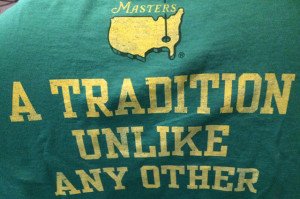
Part of this can be attributed to the longevity of the tournament and its place in popular culture, while much of it speaks to the strength of itself as a brand. The Masters is one of the few sporting events that can call itself a “brand” in the true sense of the word, complete with a well-known and revered logo, visual identity, name, strategy, etc.
One of the strengths of the Masters’ brand is that for the most part, it’s been the same for the majority of the tournament’s 80 editions. From the pristine Augusta National Golf Club and low-priced pimento cheese sandwiches to the winner’s green jacket and ceremonial opening tee shot, the tournament has fully embraced its tradition, making it a key part of its brand.
Even in the current landscape of unending corporate sponsorship and logos placed anywhere you could imagine, the Masters has maintained much of the same mindset in this area. There are no corporate signs on the grounds of the course, and corporate “partners” are limited to just five brands – who are given a combined four minutes of broadcast ad time per hour, must comply with the no signage decree and are given strict rules on how they can promote their connection with the tournament. The Masters has never been about the business side of the equation, and as the world around it has changed, the committee in charge of the tournament has resisted the need to change for change’s sake, sticking with what they feel works best for them.
 This is a lesson many brands can relate to, especially when it comes to their internal brand and brand characteristics. Just because the marketplace is moving in one direction, if it doesn’t make sense for you, staying true to who you are as a brand is infinitely more important than trying to keep up with everyone else. In fact, much like it has with the Masters, chances are this restraint will become one of your brand’s most enduring elements.
This is a lesson many brands can relate to, especially when it comes to their internal brand and brand characteristics. Just because the marketplace is moving in one direction, if it doesn’t make sense for you, staying true to who you are as a brand is infinitely more important than trying to keep up with everyone else. In fact, much like it has with the Masters, chances are this restraint will become one of your brand’s most enduring elements.
Another branding best practice that can be taken from the tournament is to embrace who you are and set a strategy of winning in your space. Don’t try to be everything for everyone, but try and be the best at what you do. The Masters isn’t the biggest sporting event in the country, nor does it appeal to the largest audience. But the tournament knows who its target audience is, knows where in their space they live, and have set out to stand atop that particular mountain. Among golf fans and golfers, there are few places more illustrious than Augusta National and few weeks as anticipated as tournament week, and they have catered their brand around this group, banking on their best qualities to then be passed on from this core group to a wider audience.
This tactic can work for brands of all industries as well – never underestimate the power of word of mouth advertising and brand connotations. Even if there is an audience who doesn’t have firsthand experience with your brand, or if they sit just outside your core market, if you have a high enough quality brand and build enough brand equity, the word will get out, and your secondary markets will grow closer to your core and build your brand even more.
Image Source 1
Image Source 2
Feature Image Source
Addison Whitney's quarterly newsletter, Forward, is bursting with branding news and insights - and we love to share what we know! Sign up here.
Keeping the “Brand” in “Brand Name”
“The whole is greater than the sum of its parts.”
Wise words that touch on so many topics, and while it’s unclear whether Aristotle had brand name development and brand strategy on his mind when he uttered this well-known refrain, he definitely struck gold on a key point in a brand’s lifecycle.
Creating a brand name is an integral part of any branding effort, since the end result will become one of the most visible and widely used aspects of a brand. But its place of importance should not lead to a misguided sense of separation in the development process, where the name is created in a vacuum, far removed from the various brand elements that will surround and support it.
“When creating a new brand name, you should always acknowledge the bigger picture,” says Brittany Scott, Manager of Verbal Branding at Addison Whitney. “Think about where you are now and where you want your brand to be in five or 10 years. Think about other brands in your space and how you want to position yourself against them.
“Your brand should be flexible enough to encompass your current market position as well as allow for growth and expansion. Names that are too limiting may face challenges in the future as your market and market share evolves.”
Too narrow of a creative mindset can result in a name choice that will hinder a brand for the foreseeable future, causing even more speed bumps when an inevitable rebrand takes place. So now, instead of gaining positive and long-lasting brand equity with the help of the brand name, you are faced with an uphill climb of time, money and effort to redo the process.
Even if the name initially fits and begins to lay the foundation to a successful brand, quality brand strategy ensures you are always looking ahead and preparing for the long-term future.
Think of brand development as a jigsaw puzzle. Each element of your brand – name, logo, strategy, etc. – is a different puzzle piece that must fit cohesively with the others while also moving the process forward to a completed picture. It doesn’t make sense to solve a jigsaw puzzle by first working on a different, unrelated puzzle. When a brand is created a vacuum, without the road map of a full brand strategy, this is exactly what you are doing. Avoid this detrimental (and potentially costly) pitfall by laying a strong foundation and creating a brand name that can represent your product or service now and in the future.
Another factor that plays into this strategic direction is, as Scott mentions, the impossibility of creating a brand that makes everyone happy about everything involved.
“There will always be differing opinions of your brand, but a strong brand message, backed up with a solid product or service, will demand respect in the marketplace.”
Let’s assume the name you create is met with a higher-than-expected level of dislike. Well, if it is floated out to the market without the brand life jacket to keep it afloat, it could take the entire brand down with it. But if the name was created within the whole of the brand, then it will be backed up and possess the support necessary to withstand any growing pains or unfavorable opinions.
Addison Whitney's quarterly newsletter, Forward, is bursting with branding news and insights - and we love to share what we know! Sign up here.
AW in Review - Addison Whitney Brand Salsa Recap 4.1.16
Welcome to a kick-off to April edition of the AW in Review! This is our roundup of our latest brand salsa and Addison Whitney news and posts!
Don’t forget, you can stay up-to-date with everything from Addison Whitney by joining the conversation with us on our social media channels – Twitter, Facebook, LinkedIn and Google+.
Branding Cinderella - How March Madness Success Grows Small School Brands
For smaller universities and colleges, national exposure comes along very rarely (if ever), often as an invite into the exposure behemoth that is March Madness. This inclusion provides a seat at the table and in the tens millions of brackets printed, researched, debated, analyzed, filled out and monitored by people around the world.
What better time to build your brand, especially if you are in the middle of a major rebrand and are looking to push your new name/logo forward into mainstream use? Read More...
Live Long And Prosper: The Secret To Brand Longevity
Everyone wants a brand that will live on for many years, basking in long-lasting success. But few brands actually reach old age, and those that do definitely have something going for them.
Enduring and successful brands have long-ago identified how they can differentiate themselves from the competition, and put that quality (or qualities) as the centerpiece of their branding. Read More...
5 Ways To Ease Social Media Branding Worries
The question whether or not to have a presence on at least one social media platform has become an easy one for brands – without any social media existence, a brand will be left out of one of the fastest-growing and increasingly vital aspect of a branding experience.
But now that it’s rightfully assumed that your brand will be a player in the social space, it’s also rightfully assumed there will be some trepidation. Here are five key points to include in your plan to help ease the worries when taking your brand into the social media realm. Read More...
How Important Is An Easily Pronounced Brand Name? [Infographic]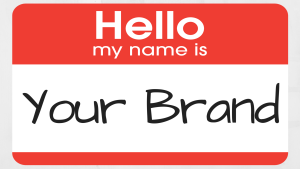
We all know them. The brands where the name has sounded one way as long as you can remember until one day, you are blindsided by the suggestion of a different pronunciation of the same brand. In this infographic from Made by Oomph! examines some of these famous brand names who wear the mark of commonly mispronounced.
Whether it be the incorrect dropping of a vowel or the addition of an extra syllable, these brands have been fighting the pronunciation battle for years, which varying levels of success. Read More...
Why Successfully Building A Brand Starts With Shutting Out The Noise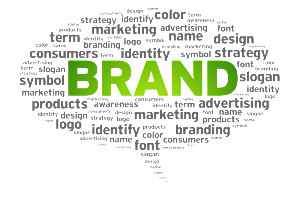
There are many aspects that go into developing and establishing a successful brand. But they really have nothing to do with it. That may sound confusing and close to oxymoronic, but it’s true.
One of the best moves a brand-building organization can take is to forget all of the substance that goes into building a brand. Once the auxiliary noise is quieted, then finding the perfect note to start the song becomes significantly easier. Read More...
Why Successfully Building a Brand Starts with Shutting Out the Noise
There are many aspects that go into developing and establishing a successful brand. But they really have nothing to do with it.
That may sound confusing and close to oxymoronic, but it’s true. One of the best moves a brand-building organization can take is to forget all of the substance that goes into building a brand. Once the auxiliary noise is quieted, then finding the perfect note to start the song becomes significantly easier.
But why simplify such a complex process at the very beginning? Well, you try determining a solid brand strategy while simultaneously brainstorming a name and designing a logo and creating a letterhead that will go on a yet-to-be created website that will be included in the on-brand email signatures that will be included in the email sending out the brand standards document to your employees who will need to have a detailed explanation how to live the brand characteristics…
When a brand to-do list starts to resemble a grocery list for Thanksgiving dinner, then it’s time to take a step back and focus on the driving factor, which is identifying the end game – who and what the brand should ultimately become.
Once the final goal is realized, then all subsequent actions and decisions will unite behind a common final destination, and the brand building process will become a synchronized and coordinated effort, instead of falling into the common trap of unfocused branding resulting in a jumbled mess of a brand that needs almost immediate fixing.
The brand naming process can be developed with the full resources available to know what it needs to convey. The same can be applied to the logo creation, the collateral designing and so on, down the line until the full brand has been established.
To carry the musical metaphor along some more, when writing a song, composers don’t begin by determining the exact varying note each different area of the orchestra will play. They begin by finding the foundational chords that will cultivate the song’s melodies and ultimately create the song. Only then, once they know where they want the song to go, do they bring in the building block components that round out the full vision.
The greatest creators had a unique characteristic of singular focus on their task at hand – they could shut out the world around them and devote their attention solely on their creative process, knowing where they wanted to go and not allowing the litany of distractions available divert them from that end goal.
Applying this same mindset and process to your brand building and brand strategy is a tried and true way to ensure that the end brand product is well-rounded and each brand ingredient carries the full potential for the final brand building recipe.




